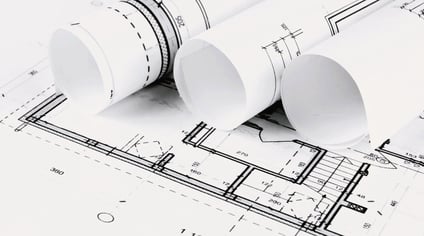Roles in Australian Development: Architects, Building Designers, and Draftspersons
Understanding the roles and distinctions between architects, building designers, and draftspersons is crucial in Australian development projects, as each professional contributes unique expertise, qualifications, and regulatory oversight to navigate the building industry and achieve project goals effectively.
Atlas 27
4/12/20243 min read


Architects, Building Designers, and Draftspersons
In Australian development projects, understanding the roles and distinctions between architects, building designers, and draftspersons is essential for navigating the building industry to achieve your project goals. From their qualifications to regulatory oversight, each professional brings unique expertise to the table. We delve into the differences between architects, building designers, and draftspersons in Australia, exploring how they are regulated, their qualifications, fee structures, and how they collaborate together on development projects.
Regulation and Qualifications
While the building and construction industry is heavily regulated in Australia, architects, building designers and draftspersons all have different qualifications to fit the needs of clients.
Architects in Australia are regulated by the Architects Accreditation Council of Australia (AACA) and must complete a recognized architectural degree, followed by practical experience and registration with the relevant state or territory architect registration board. They are trained to design buildings and spaces that are both functional and aesthetically pleasing, considering factors such as structural integrity, environmental sustainability, and user experience. Typically, architects hold registration, which prohibits others in the building design field from using the term "architect" or "architecturally designed" without such credentials.




Differences in Fees
Architects typically charge fees based on a percentage of the total project cost or hourly rates, depending on the scope and complexity of the project. Building designers may charge similar fees, although they may offer more flexible fee structures such as fixed fees or package deals for specific services. Draftspersons often charge lower fees than architects and building designers, as their role is more focused on technical drafting rather than design. But they will also liaise between parties in volved if necessary.
Building designers, on the other hand, are not regulated by a national body but may belong to professional associations such as the Building Designers Association of Australia (BDAA) or the Design Institute of Australia (DIA). They typically hold qualifications in building design or related fields and specialize in designing residential, commercial, and industrial buildings. These qualifications range from basic to advanced. Building designers focus on creating practical and cost-effective design solutions that meet their clients' needs and regulatory requirements.
Draftspersons, also known as architectural drafters or building drafters, are responsible for creating technical drawings and plans based on the designs provided by architects or building designers. They may hold qualifications in drafting or architecture and are proficient in drafting software and building codes. Draftspersons play a crucial role in translating design concepts into detailed construction drawings that contractors and builders can use to bring projects to life. They can also provide property owners with development plans and drawings, based on their own designs, and can guide them through the process of getting the project done from start to finish.
Collaboration on Development Projects
Architects, building designers, and draftspersons often collaborate together on development projects, each contributing their expertise to different stages of the design and construction process. Architects provide the initial conceptual designs and overall vision for the project, while building designers focus on developing detailed plans and specifications. Draftspersons then translate these designs into technical drawings and documentation that meet regulatory requirements and construction standards., or they work directly with the architects to provide all drawings, plans and needed documentation.
In Summary
In Australian development projects, architects, building designers, and draftspersons each play unique and complementary roles in bringing design concepts to fruition. Understanding the differences between these professionals, their qualifications, regulatory oversight, fee structures, and how they collaborate together is essential for ensuring successful outcomes in construction projects. By leveraging their expertise and working together collaboratively, architects, building designers, and draftspersons can create innovative, functional, and sustainable buildings that enrich communities and enhance quality of life.
Atlas 27 - Residential Drafting
Atlas 27 is a small drafting studio located in the Southern Highlands of New South Wales, Australia. We have qualifications in drafting for residential purposes, and collaborate with architects, building designers and property owners, ensuring all drawings an plans are to high standards.
While our main focus is less on the concept design and more on the drawings and plans, we do love a good architectural design!


Contact us today to learn more about how we can assist you with your development project.
Connect
info@atlas27.com.au
+61 422 236 055
Follow
Stay connected with us


Copyright © 2024 – Atlas 27 – ABN 71 504 928 413
